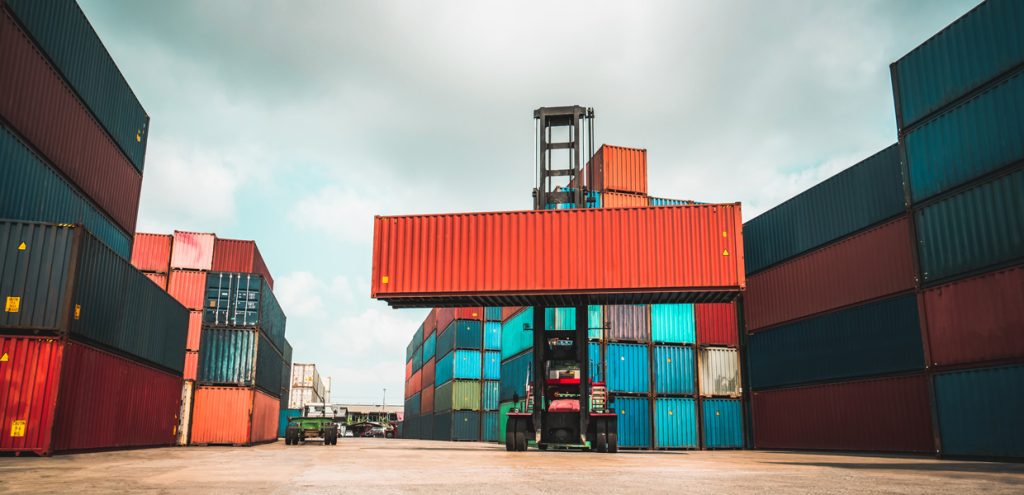Companies around the globe continue to fight an uphill battle as the supply chain crisis shows no sign of easing up. Since that start of the pandemic, the supply chain was struck by temporary port and airport closures, depleted workforces, transport disruptions, warehouse shortages, shipping container shortages and shipping delays. All this contributed towards a ripple effect which is still being felt well into 2022.
According to a new survey by Carl Marks Advisors, in partnership with SupplyChainBrain, more than half of supply chain executives do not expect a “return to normal” until the first half of 2024. Whilst Cargo Compass South Africa CEO Sebastiano Iorio warns that the supply chain bottlenecks will lead to higher prices of consumer and commercial goods across South Africa.
In this article, we will explain more about the global supply chain crisis and how it is affecting the logistics and freight forwarding industry. We will also cover what steps freight forwarders, such as M6T, have taken to help businesses navigate through this rough terrain.
The supply chain crisis and what to expect
Let us start at the beginning of what is now considered the global supply chain crisis. With the outbreak of COVID-19, governments had forcibly restricted people’s movements by enacting the global lockdown measures throughout 2020. Companies had to temporarily close their doors and manufacturers halted production in order to limit the spread of the virus. Unfortunately, these temporary closures forced companies to downsize, thus significantly reducing the workforce in many countries across all industries.
During this worldwide lockdown period, fewer goods were being produced and, with the mass unemployment rates increasing, resulting in fewer people spending money. Companies had assumed that the demand for goods would drop sharply as a result. However, this was not the case and a complicated situation began to unfold, challenging the supply chain’s global capacity.
In 2020, there was a surge in demand for PPE (personal protective equipment), such as surgical masks, gloves, full face shields, hand sanitisers, etc., which more than half of were being produced by Chinese companies. As factories pushed forward to meet the growing demand, cargo vessels delivered the available PPE to countries across the globe.
With shipments of PPE moving across the world, empty shipping containers began stockpiling at ports and warehouses, due to the lack of workers and drivers to deliver them to their required locations. This, in turn, lead to a container shortage crisis. The demand of consumers shifted drastically to online platforms; adapting their needs during the lockdown period. Purchasing not only PPE, but office and medical supplies, electronics and raw materials, many of which are produced in China and across Asia, which suffered severe lockdown restrictions.
As the demand for these goods increased, ports became overwhelmed when multiple ships started arriving at the same time, with backlogs of up to 100 vessels queued at ports waiting to offload. With limited workforces, port bottleneck delayed deliveries, whilst the need for labour persisted. Throughout 2021, we were hopeful that the bottlenecks and backlogs would show signs of easing, however halfway through 2022 we can see that this is not the case.
These backlogs and product shortages, coupled with a rise in fuel costs and the economy still recovering from the impacts of lockdowns in 2020, this means more bad news ahead. What we already see happening is an increase in freight costs for, both, imports and exports due to the higher oil prices and increasing costs for consumer and commercial goods. The shortages are also having a significant impact on, already, fast-rising inflation rates that are affecting many countries across the globe.
How does the global supply chain crisis affect logistics and freight forwarding?
We have briefly covered the knock-on effect that the supply chain crisis has had on the logistics and freight forwarding sector in the section above. These knock-on effects can be categorised into three divisions: the pandemic, the 2022 Russian invasion of Ukraine and the shipping backlogs. Below, we will take a deeper look into the challenges facing the logistics and freight forwarding sector:
Higher Demand for Consumer and Commercial Goods
The mass transition to online shopping platforms during the pandemic saw demand for consumer goods increase rapidly in 2020. Consumers began spending on home improvement and office supplies, as they slowly adjusted to their new work-from-home lifestyle. Companies, on the other hand, struggled to meet increasing consumer demand and, as a result, switched from a just-in-time inventory management systems to a just-in-case inventory management systems, to avoid shipping and delivery delays as a result of COVID-19 restrictions. This increase in product imports and exports, from both the consumer and commercial sector, negatively impacted an already fragile supply chain.
Road Freight Challenges
The road freight industry was faced with different challenges because of the pandemic, these challenges can be seen in high turnover rates, increased hijacking risks and poor working conditions for reduced pay. With companies, initially, having to downsize during the pandemic, the need for qualified and reliable drivers were in short supply once the transportation demand grew over the course of 2020 and 2021. This shortage of drivers exacerbated the supply chain transportation crisis, not only in South Africa, but across the globe.
Ocean Freight Challenges
Due to the increased demand for imports and exports and, with the tight COVID-19 restrictions at Chinese ports, container shortages and reduced workforces at ports and warehouses, caused a major backlog of goods being removed from container ships. This delay of goods being shipped and delivered coupled with the rise in fuel costs, resulting from sanctions associated with the Russian invasion of Ukraine, meant that the overall cost of shipping would quadruple in recent years.
Chinese Port and Factory Closures
With China enacting some of the strictest lockdown measures to help prevent their country’s spread of the COVID-19 virus, many factories and ports were temporarily closed. These temporary factory and port closures led to production delays, pent-up cargo entering the supply chain routes and aggravating the pre-existing global transportation and logistics issues.
Freight forwarding solutions for businesses in South Africa
There are multiple steps a company can take to reduce the risks associated with transportation delays and increasing freight costs. It is important as a business looking to transport goods, to invest in a reliable, transparent and capable freight forwarding partner, who will strive to mitigate risks and costs of potential delays. Below, we will explore a few of these steps to help businesses make smarter decisions when it comes to meeting their freight forwarding needs:
Changing Suppliers or Dual Sourcing Suppliers
A way that companies can combat the risks associated with shipping delays or high freight costs can be to source domestic suppliers or dual suppliers of their goods. Companies should evaluate the financial benefits of having multiple suppliers and weigh the pros and cons against the potential of delivery delays and rising freight costs, amongst a global supply chain disruption. Another thing to consider regarding dual sourcing is to have your suppliers in diverse locations to avoid potential backlog in the events of local lockdowns, bad weather, strikes, port closures, etc.
Evaluating Onshoring or Nearshoring Production Options
Many companies around the globe often outsource the production of goods to factories or manufacturers located overseas. However, when faced with massive delays in production or manufacturing, increased costs of shipping and delivery reliability issues, some companies choose to move their overseas production back to the domestic company’s geographic location by means of onshoring; to reduce costs and risks. Companies also utilise nearshoring methods to relocate production to a neighbouring company on the same continent.
Knowing Your Shipping Options
Knowing what shipping options are available to your business and how risks associated to shipping can be mitigated is something your business and freight forwarding partner should discuss. Let us explore some topics worth taking into consideration:
- Shipping Terms: If you are currently engaged in a contract with a freight forwarder, you should consider reviewing whether the Incoterms provisions in the contract are up to date and aligned with your current shipping requirements. Common updates made to Incoterms provisions include ensuring that the Incoterm referenced is the most recent version (Incoterms 2020) and correctly reflect the business’ current practices for delivery. As the business climate shifts, companies can choose to update the Incoterms provisions to further minimise the risk of incurring unforeseen transportation costs and delays.
- Shipping Costs: If your business is buying or selling goods, a contract needs to be created and should stipulate and define the financial involvement of each party, regarding who is responsible for the packaging and shipping costs. Other points of discussion should include shipping or maritime insurance, customs clearing, taxes, transfer fees, etc. Knowing who is responsible for covering the costs associated with packing and shipping will help manage expectations when transporting the goods in question.
- Shipping and Delivery Delays: When it comes to shipping goods, unexpected delays can occur, especially given the current ongoing supply chain disruptions plaguing the globe. Therefore, it is important, not only as a business looking to ships their goods through a freight forwarder, but also for the freight forwarding partner, to manage expectations. Discussing potential financial risks in the event of delays should be considered an important step to take with the freight forwarding partner. Before commencing with the transportation of any goods, make sure you are fully aware of the terms and understand all the cost implications.
- Force Majeure: Similarly, to potential shipping delays, both, the business looking to transport goods and the freight forwarding partner need to protect themselves and their expectations. This is done by discussing potential force majeure scenarios and implementing strategies to safeguard themselves from being held liable for disruptions in the case of an extraordinary event, such as war, strikes, riots, crime or global supply chain disruptions.
Conclusion
It is clear that the global supply chain crisis is far from over and the possibility of returning to normal may not be anywhere near in sight. However, with the right freight forwarding partner, the journey to transport your goods from A to B need not be a difficult one, even during a supply chain crisis.
At M6T, we strive to provide customer-oriented services, meaning we monitor all freight movements from start to finish, so that you can be sure your cargo arrives secured and on time. With all services supported by complete and transparent communication.
Contact us today at 011 397 1241 or visit us at www.m6t.co.za for more information on how we can help you with your freight forwarding and customs clearing requirements.
References:
- https://economictimes.indiatimes.com/news/international/business/how-the-global-supply-chain-crisis-unfolded-this-year/articleshow/88486682.cms
- https://www.engineeringnews.co.za/article/supply-chain-bottlenecks-here-to-stay-for-2022-goods-prices-to-rise-sharply-cargo-compass-sa-2022-04-06/rep_id:4136
- https://www.natlawreview.com/article/going-distance-managing-freight-costs-and-delivery-delays-2022
- https://www.ies.co.uk/news/freight-forwarding-during-supply-chain-crisis



